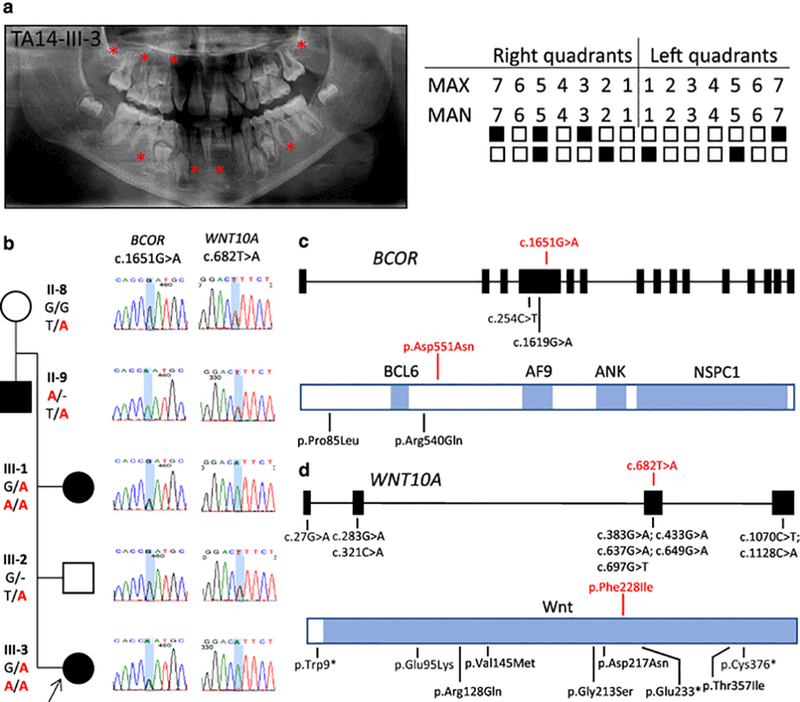Fig. 4.

Clinical findings of TA14 family proband, segregation results, and molecular findings of patients with missense variants in BCOR and WNT10A. (a) TA diagnosis was confirmed through clinical and radiographic examinations for patient TA14-III-3. The panoramic radiograph of the proband was taken at 8 years 3 months. The missing permanent teeth are indicated as in Fig. 1a. (b) Pedigree and genotypes of family TA14 and genotyping results of available family members. A heterozygous missense variant c.1651G>A (in red) in BCOR was identified in the proband (III-3, arrow) and her sister (III-1), the variant in hemizygous state was identified in the father (II-9), but not detected in the unaffected brother (III-2) and mother (II-8). While no parental consanguinity was reported for this pedigree, the calculated total AOH for the proband was 99.983 Mb. (c) The variant identified in our study and previously reported missense variants all map to exon 4 of BCOR. The variant c.1651G>A identified in the present study is indicated in red font. Below the gene structure is a schematic representation of BCOR protein structure with known domains indicated in blue, indicating the corresponding amino acid changes, a subset of which are located upstream and downstream of the BCL6 binding site. Abbreviations: BCL6, B-cell CLL/lymphoma 6 binding cite; AF9, the common mixed lineage leukemia gene fusion partner binding site; ANK, Ankyrin repeats; NSPC1, polycomb group ring finger 1 binding site. (d) A selection of known variants map to four exons of WNT10A. The homozygous variant c.682T>A (in red) detected in the present study is in exon 3. Below the gene structure is a schematic representation of WNT10A protein structure, indicating the corresponding amino acid changes, a subset of which are located within the signal region (white) and mature protein region (blue).
